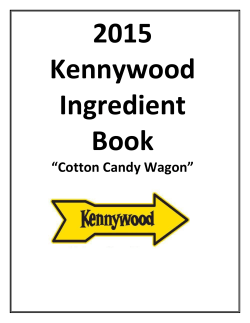
River red gums in cotton landscapes
NRM focus on research River red gums in cotton landscapes Dr Rhiannon Smith, University of New England What are you researching? River red gums capture the hearts and minds of Australians, inspiring art and poetry and playing an important spiritual role for indigenous cultures. As such, river red gums are an easily identifiable icon species and an important focal point for monitoring riparian health and condition, as well as the sustainability of management practices at catchment scales. They provide a range of important ecosystem services to cotton growers and the wider community during their life-span of up to 1000 years. Some of the important roles of river red gums that my research has measured are provision of habitat for fauna and biodiversity conservation value, carbon storage and sequestration, and soil stabilisation. What have you found? My research has shown that well-managed, good condition river red gum ecosystems on cotton farms provide important habitat for threatened and declining woodland birds. Riparian areas provide biodiverse, structurally complex, wellconnected habitat and are therefore home to species that are not found elsewhere on the floodplain. Important species found in riparian areas on cotton farms include black-chinned honey eater, crested shrike-tit, rufous whistler, red-capped and eastern yellow robins, jackie winter and brown treecreeper. In addition, riparian areas are highly productive and sequester and store large amounts of carbon. We found 300 tonnes of carbon per hectare stored in river red gum woodland near Narrabri, and sequestration rates in healthy, well-managed riparian areas of up to 3 tonnes per hectare per year are reported in the literature. This carbon stabilises soils and riverbanks, stopping slaking and dispersion of soil aggregates, and reduces sediment yields into river systems. case study Why is it important? Ecosystem services are vital for sustainable agriculture and general well-being of rural communities. Many ecosystem services provided by river red gum vegetation communities contribute directly to agricultural productivity, such as nutrient cycling, water filtration, breakdown of chemicals, natural pest control and pollination. In addition, cotton growers can illustrate good environmental management and stewardship by conserving biodiversity on farms. Environmentally conscious consumers demand sustainably produced products, and minimising carbon footprints is one way growers can illustrate their commitment to this goal. How can I apply the research/what should I do about it? Well-managed, good condition riparian areas are an integral part of healthy catchments and sustainable agricultural landscapes. Growers who can maintain healthy trees, good groundcover, diversity of native plant species, complex habitat structure and connectivity will benefit from the services provided by riparian ecosystems. Where do I go for more information? Information and resources to help growers manage their riparian areas can be found at: • the CottonInfo Natural Resource Management webpage: www.cottoninfo.com.au/natural-resourcemanagement • the myBMP Natural Assets module: www.mybmp.com.au • the Riparian Land Management Guidelines for the Cotton Industry: www.cottoninfo.com.au/publications/ managing-riparian-lands-cotton-industry www.cottoninfo.net.au Or, contact: Dr Rhiannon Smith Ecosystem Management University of New England Ph: 0409 610 755 Em: rsmith66@une.edu.au Stacey Vogel Natural Assets Technical Specialist CottonInfo Ph: 0428 266 712 Em: staceyvogel.consulting@gmail.com This project is funded by the Cotton Research and Development Corporation.
© Copyright 2025
















